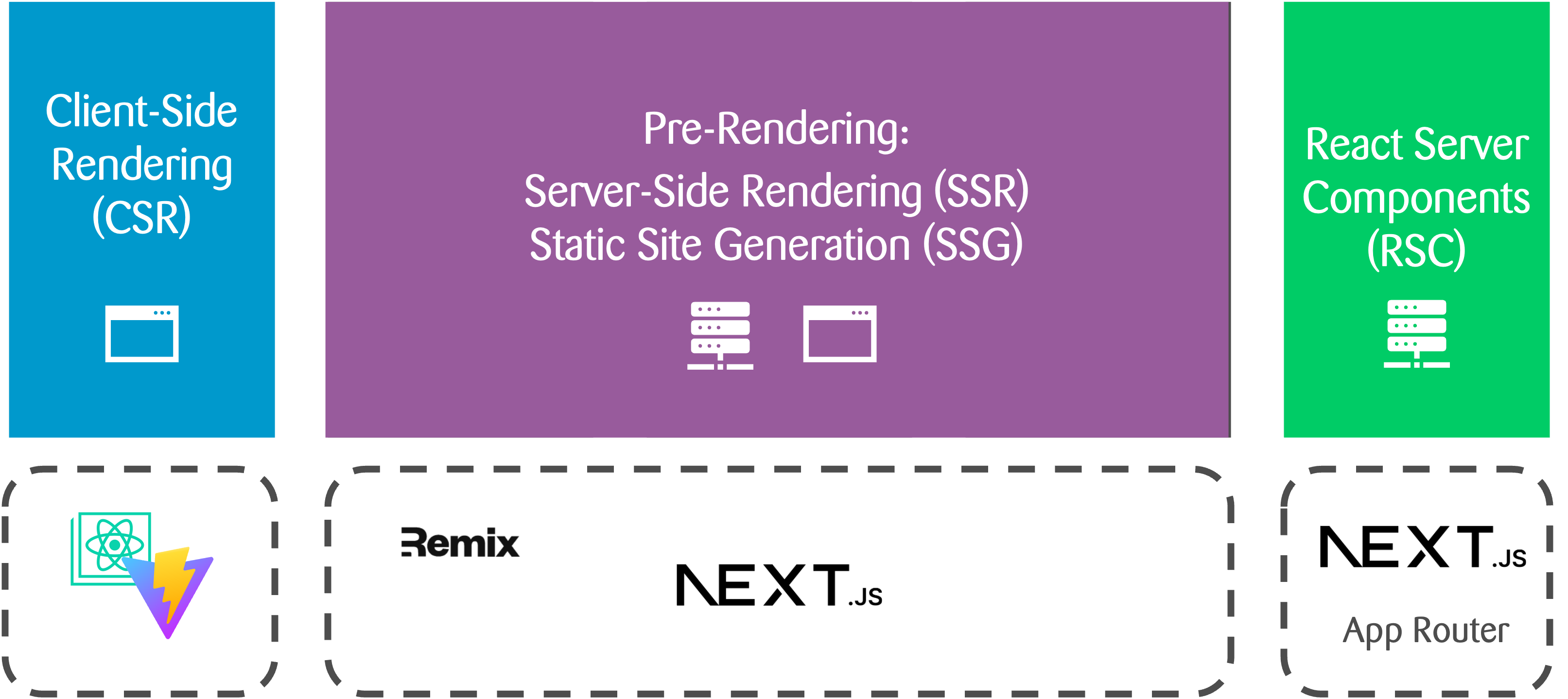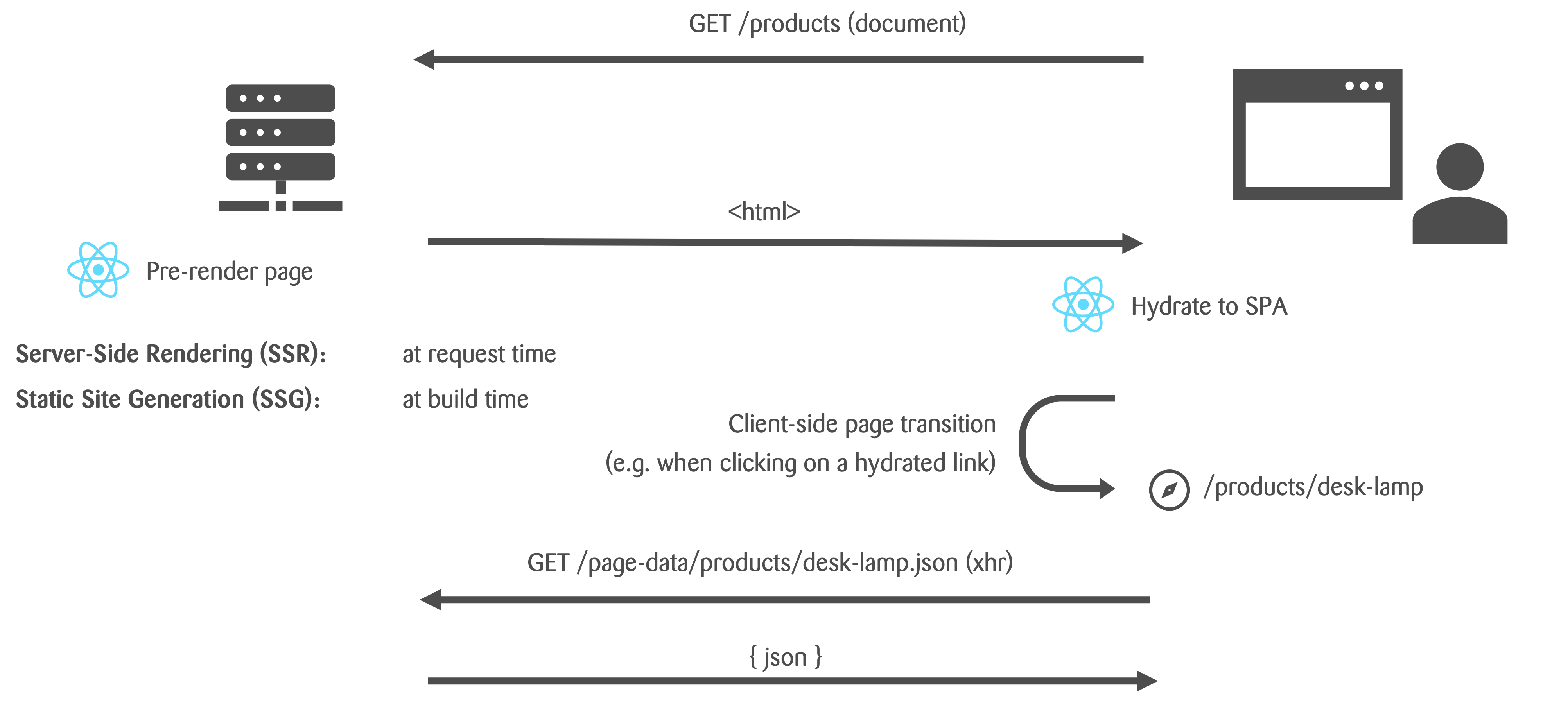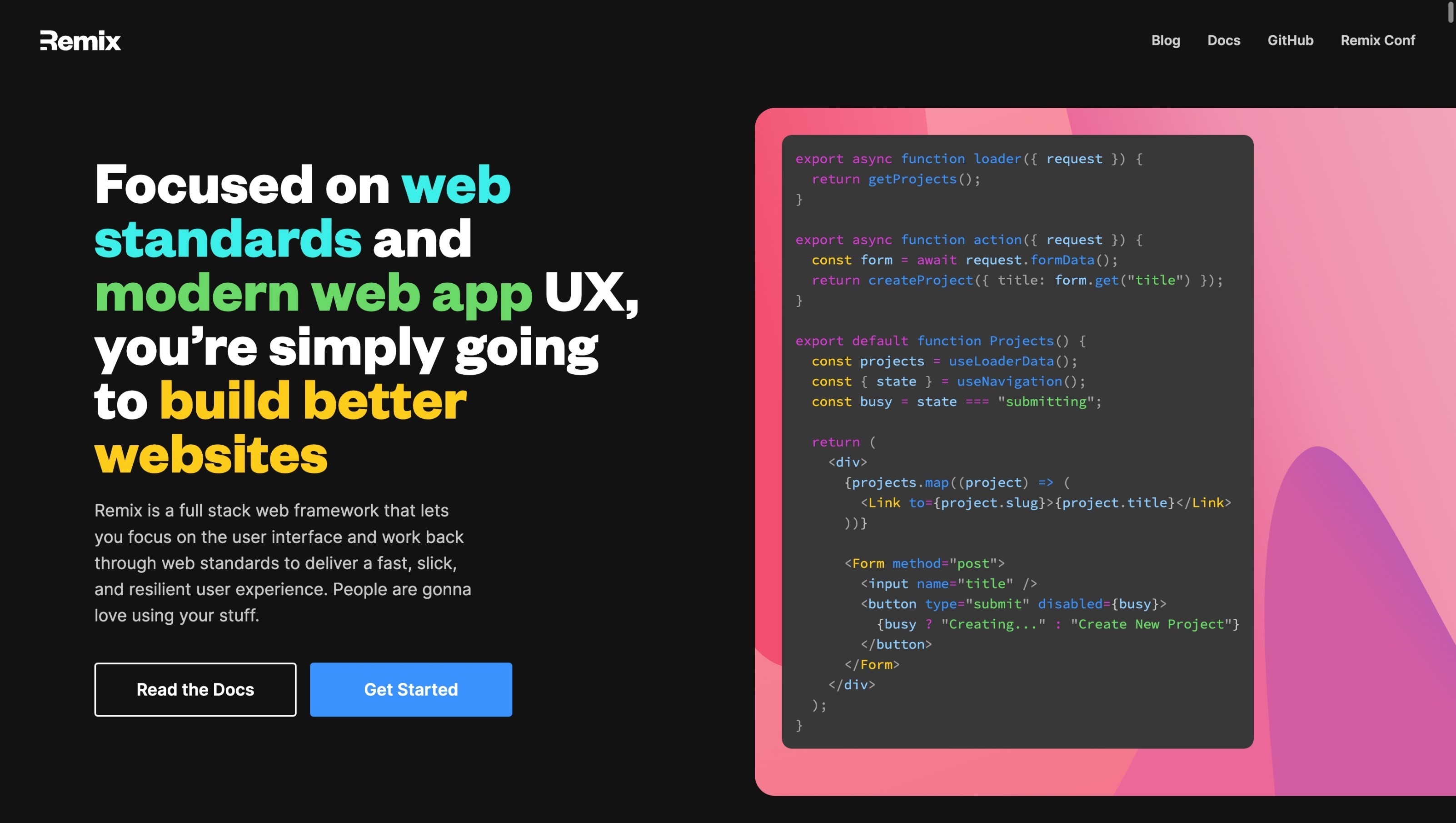Remix
Essential React
Server-Side Rendering (SSR)
React Rendering Mechanisms
Overview

How does Pre-Rendering work?

Remix
- Created by Michael Jackson and Ryan Florence (same as React Router)
- Remix v1 in November 2021
- Use the Platform philosophy
- Only Server-Side Rendering (no SSG)
- Supports Progressive Enhancement
 remix.run
remix.run
Setup
Create a new Remix app
$ npx create-remix@latest pokedex-remix
? Initialize a new git repository?
> Yes
? Install dependencies with npm?
> Yes
$ cd ./pokedex-remix
$ npm run dev
File Structure

-
app/routes/*.tsx
route files (more details in next chapter) -
app/entry.*.tsx
complete control over server and client entry points (optional) -
app/root.tsx
describes the app's HTML document / root layout -
public/*
public asset files -
remix.config.js
dev server / build options

app/root.tsx
NPM Scripts
npm run dev
Starts the app in dev mode with hot reload
npm run build
Creates a production build of your app (output in build and public/build folders)
npm start
Starts Node.js server in build folder
npm run typecheck
Runs TypeScript compiler to ensure type-safety in build pipeline (not done automatically by Remix compiler)
Routing
Intro to Route File Naming
General conventions
- Remix uses the same concepts and core logic as React Router
- Use file names to define routes
- Route files are placed in app/routes
- Flat file structure (no nested route folders)
- Co-location of non-route files is possible
_index indicates an index route
→ URLs / and /blog
Static route segments
→ e.g. /about and/blog/archive
Use the dot delimiter for nested routes
→ URLs /blog/…
Dynamic route segments (parameters) start with a dollar symbol
→ e.g. /blog/five-great-tips-for-2024
Route Module API
Route Module API
blog.$slug.tsx
How can we redirect to a different route?
E.g. / → /blog
How can we redirect to a different route?
E.g. / → /blog
_index.tsx
Must be a named export called loader.
_index.tsx
→ redirects to blog.tsx
Other Useful Route Module Exports
Exercise
- npx create-remix@latest <app-name>
- Set up routes for pokemon list, pokemon detail, and profile pages
- Display mock data
Solution
app/routes/_index.tsx
app/routes/pokemon._index.tsx
app/routes/pokemon.$pokemonName.tsx
app/components/layout/Layout.tsx
app/root.tsx
Complete solution code can be found on GitHub on the branch 01-routing.
Data Fetching
Loaders
Loaders
- Single, optional loader per route (export loader)
- Run on the server (only)
- Define a HTTP endpoint: request → response
- useLoaderData to access response data in component
blog.$slug.tsx
Modifying the HTTP response
Modifying the HTTP response
Return a Response object…
Modifying the HTTP response
…or throw it!
Exercise
- Load the data for the list and detail pages from the Poke API
- Show the Not Found page if an unknown pokemon name is passed in the URL
- Stretch goal: Transform the data from the PokeAPI so that only the needed data is sent to the client
Solution
app/api/fetcher.ts
pokemon._index.tsx
pokemon.$pokemonName.tsx
Complete solution code can be found on GitHub on the branch 02-data-fetching.
Forms & Actions
Creating a form
blog.$slug.tsx
Let's start simple: We can use a native HTML form.
blog.$slug.tsx
On the server the form is processed by an action.
blog.$slug.tsx
Form data is read from the request using the standard Request.formData() method.
blog.$slug.tsx
The data can then be processed as desired (validated, stored, etc.).
blog.$slug.tsx
Like the loader, the
action function can return a Response
object.
Typically, a redirect is returned to
implement the
Post/Redirect/Get
pattern.
blog.$slug.tsx
What will happen when the user clicks the Submit button?
→ It works! But it does a full document request: POST /blog/…
blog.$slug.tsx
The Remix Form component brings the expected SPA behavior.
It still has the native form behavior as
long as JS has not loaded yet.
→ Progressive Enhancement
Sessions and Cookies 🍪
Remix has built-in support for sessions:
- Cookies
- In-memory (dev only)
- Files
- Cloudflare Workers
- Amazon DynamoDB
Let's work with the most versatile one:
- Cookies
app/sessions.ts
We set up our session handling utilities.
app/sessions.ts
We set up our session handling utilities.
And can use them in server-side code (typically loaders and actions):
Exercise
- Add a form for name and email to the Profile page
-
When the form is submitted:
- Submit the data to the server and store name and email in a cookie
- User stays on the same page
- Display the name in the navigation bar
Solution
app/components/profile/Profile.tsx
app/sessions.ts
app/routes/profile.tsx
app/components/layout/Layout.tsx
app/root.tsx
Complete solution code can be found on GitHub on the branch 03-forms-actions.
Validation (server-side)
What do we want to show in case of validation errors?
The form, with:
- The field values
- Validation error messages per field
Thus, what do we need to do differently in our action?
Thus, what do we need to do differently in our action?
If request is invalid, return a HTTP 400 response with the field values and errors.
In the component, useActionData to access the data returned by the action:
Exercise
-
Validate the profile form, e.g.
- Name and email are required
- Name is max. 25 characters
- Email is a valid email address
- Ensure the submitted data is displayed
- Show the validation error messages at the form fields
Solution
app/routes/profile.tsx
app/routes/profile.tsx
app/components/profile/Profile.tsx
app/components/profile/Profile.tsx
Complete solution code can be found on GitHub on the branch 04-validation.
Recap
We learned…
- What server-side rendering (SSR) is
- How to set up a Remix app
- How to do routing in Remix
- How to fetch data in Remix
- How to create and process forms in Remix